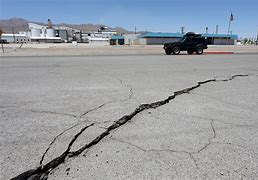World
Japan shaken by 7.3 magnitude quake, tsunami warning issued
Tokyo: An earthquake with a preliminary magnitude of 7.4 struck northeastern Japan’s Fukushima on Tuesday, a weather agency said, while tsunami waves were observed in the area and two persons were injured.The quake registered lower five on the Japanese seismic scale of seven in northeastern Fukushima prefecture, Xinhua quoted the Japan Meteorological Agency as saying.
Tsunami evacuation orders were issued in areas including Fukushima, Miyagi, Iwate, Aomori by the weather agency, as the first wave of tsunami was observed at coastline 20 km east of Iwaki city in Fukushima prefecture and then 1.4-metre tsunami were observed in Sendai in northeastern Miyagi prefecture after the quake.The weather agency also warned of further tidal waves of up to three metres for Fukushima and one metres for other parts of the coastline facing the Pacific.
Tidal waves of 0.3-1.4 metres have been observed so far at Onahama port and Soma port in Fukushima prefecture, Ofunato port and Kuji port in northeastern Iwate prefecture, Sendai port and Ishinomaki Ayukawa in northeastern Miyagi prefecture, Oarai port in eastern Ibaraki prefecture and Katsuura in eastern Chiba prefecture.Two old men were injured in Fukushima, with one struck by falling tableware at home and the other cut by broken glass at a nursing home.
The epicentre of the quake was at a latitude of 37.3 degrees north and a longitude of 141.6 degrees east and occurred at depth of 10km, said the weather agency.The temblor was centred in waters offshore of northeastern Fukushima prefecture which borders the Pacific Ocean and is to the northeast of the nation’s capital city of Tokyo.The jolt, centred in the Fukushima, could be felt in central Tokyo and also shook other northeastern Japanese prefectures including Tochigi and Ibaraki.
In addition, Shinkansen train services were partially suspended in eastern Japan and power outage affected at least 1,100 households in Fukushima prefecture and central Niigata prefecture.
World
Lockdowns in China Force Urban Communities to Defy Censorship and Vent Frustration Online

Shanghai’s rich middle class is leading a wave of online dissent over the strict and prolonged lockdowns imposed in various parts of the country. Chinese internet censorship is struggling as patience is wearing thin in many urban centers, coming up with creative forms of online protests.
Social Media Posts Revealing Lockdown Tension in Shanghai
Drawn-out lockdowns are nothing new in China as authorities insist with the nation’s zero-Covid policy since the start of the pandemic. Currently over This time around, however, metropolitan areas like Shanghai are increasingly difficult to keep quiet, given that its more than 25 million residents have seen weeks of total isolation along with food shortages and many other service interruptions.
Dozens of towns and reportedly over 300 million Chinese citizens have been affected by lockdowns of different severity. As expected, urban netizens have been most outspoken over their difficulties by finding creative ways to get around state censorship and bans placed on topics, news comments and spontaneous campaigns.
Shanghai residents have been using mobile proxies and hijacking seemingly unrelated hashtags to talk about healthcare issues, delivery failures and the overall severity of their situation. The “positive energy” that the Chinese government wants to transmit during the recent prolonged series of lockdowns does not come naturally to those counting food supplies and online censors are working hard to filter words, trending topics and undesired social media sharing.
WeChat groups and message threads are under constant monitoring. Posts questioning the zero-Covid approach have been quickly deleted, including by leading Chinese health experts like Dr. Zhong Nanshan. Video footage is soon censored and protests and investigations are quickly made to disappear.
Where this has not worked, officials have exposed banners with warnings and outright threats like “watch your own mouth or face punishment”, while drones have been patrolling the city skies. Yet, if anything, this has led to further tensions and unspoken confrontation with Shanghai’s educated and affluent middle class.
Creative Online Solutions Harnessing Civic Energy
Announcements by Chinese social media that they would be publishing the IP addresses of users who “spread rumors” have not helped either. Tech industry research has shown that much of Asia’s tech-savvy population has a habit of using mobile proxies and other privacy tools, quickly finding workarounds to browse the internet freely and talk to the world about the hottest topics.
The sheer volume of forbidden posts is already a challenge for the very censorship system, experts explain. Unable to track all trending hashtags, state workers overlook topics that speak about the US, Ukraine or other popular news. Linking human rights elsewhere to their situation, Chinese online dissidents establish their informal channels and “hijack” the conversation to share personal or publicly relevant information about the Covid suppression in their town.
Sarcastic and satirical posts still dominate. Others hope to evade the censors by replacing words from famous poems or the national anthem. One thing is certain – social media, when harnessed with the right creativity, has proven its ability to mount pressure on the government in even some of the most strictly controlled tech environments like China.






















